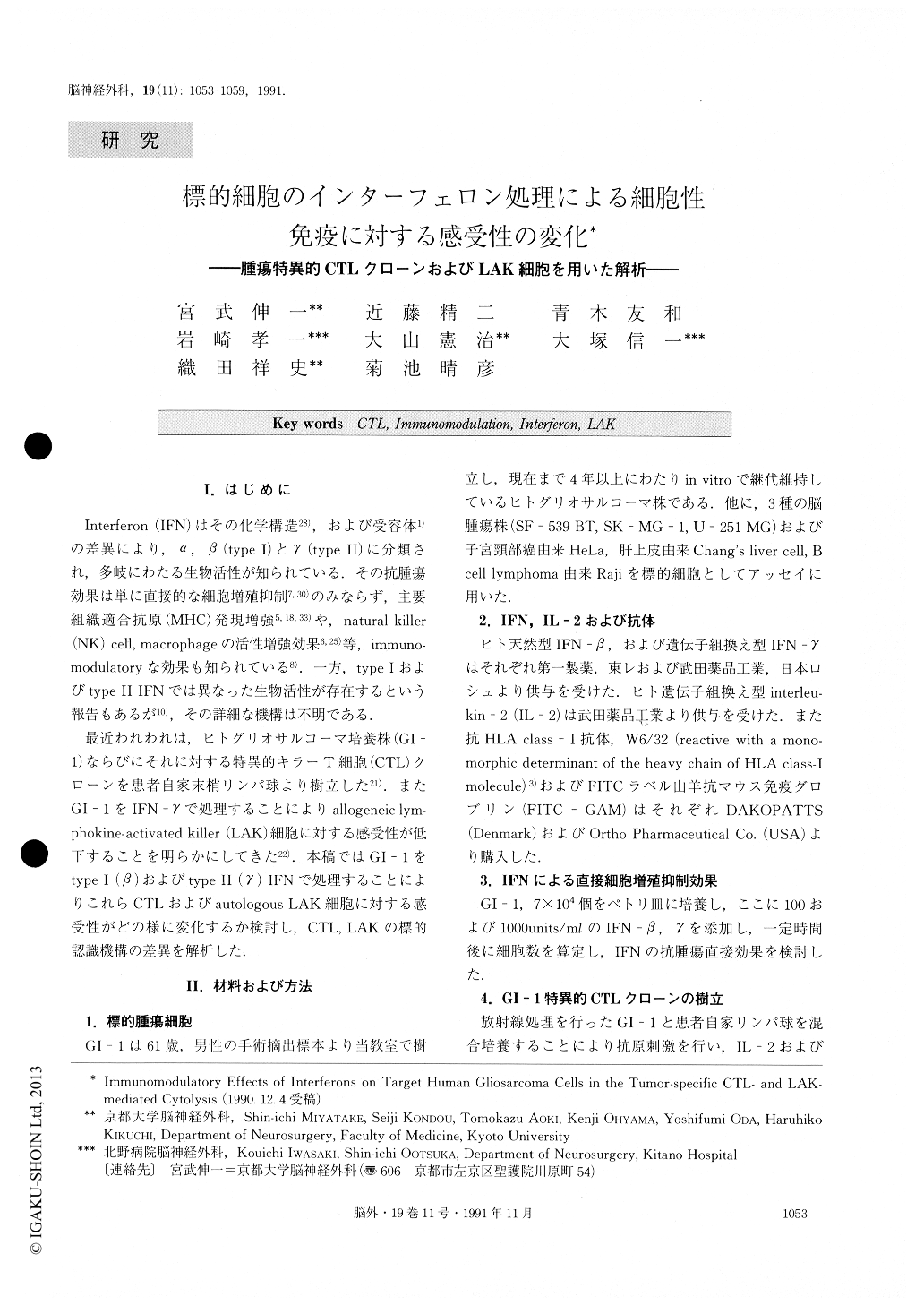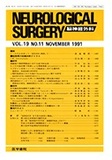Japanese
English
- 有料閲覧
- Abstract 文献概要
- 1ページ目 Look Inside
I.はじめに
Interferon(IFN)はその化学構造28),および受容体1)の差異により,α,β(type I)とγ(type II)に分類され,多岐にわたる生物活性が知られている.その抗腫瘍効果は単に直接的な細胞増殖抑制7,30)のみならず,主要組織適合抗原(MHC)発現増強5,18,33)や,natural killer(NK)cell, macrophageの活性増強効果6,25)等,immuno—modulatoryな効果も知られている8).一方,type Iおよびtype II IFNでは異なった生物活性が存在するという報告もあるが10),その詳細な機構は不明である.
最近われわれは,ヒトグリオサルコーマ培養株(GI—1)ならびにそれに対する特異的キラーT細胞(CTL)クローンを患者自家末梢リンパ球より樹立した21).またGI-1をIFN-γで処理することによりallogeneic lym-phokine-activated killer(LAK)細胞に対する感受性が低下することを明らかにしてきた22).本稿ではGI-1をtype I(β)およびtype II(γ)IFNで処理することによりこれらCTLおよびautologous LAK細胞に対する感受性がどの様に変化するか検討し,CTL,LAKの標的認識機構の差異を解析した.
Abstract
We compared the regulatory effects of interferon (IFN) - β and IFN- γ on the susceptibility of a human gliosarcoma line GI-1 to the attack of autologous cloned tumor-specific cytotoxic T-lymphocytes (CTL) and lymphokine-activated killer (LAK) cells. Preincu-bation of GI-1 cells with IFN- γ caused augmented sus-ceptibility to the cytotoxic attack of two autologous CTL clones, whereas IFN- β exhibited no such marked effect. On the other hand, preincubation with either IFN- β or IFN- γ made the GI-1 cells resistant to the attack of autologous LAK cells. Both IFNs augmented the surface expression of HLA class-I molecules on GI-1 cells. A monoclonal anti-HLA class-I antibody block-ed the cytolysis by one CTL clone, but not by the other one. These results suggest that IFN- γ exerts some different effect (s) from that of IFN- β on the target GI-1 cells in their susceptibility to the CTL-mediated cytolysis, and that recognition mechanisms of target cells by the CTL are different from those by. LAK cells. This draws our attention to IFN administration in adoptive immunotherapy against brain tumors using CTLs and LAK cells.

Copyright © 1991, Igaku-Shoin Ltd. All rights reserved.


